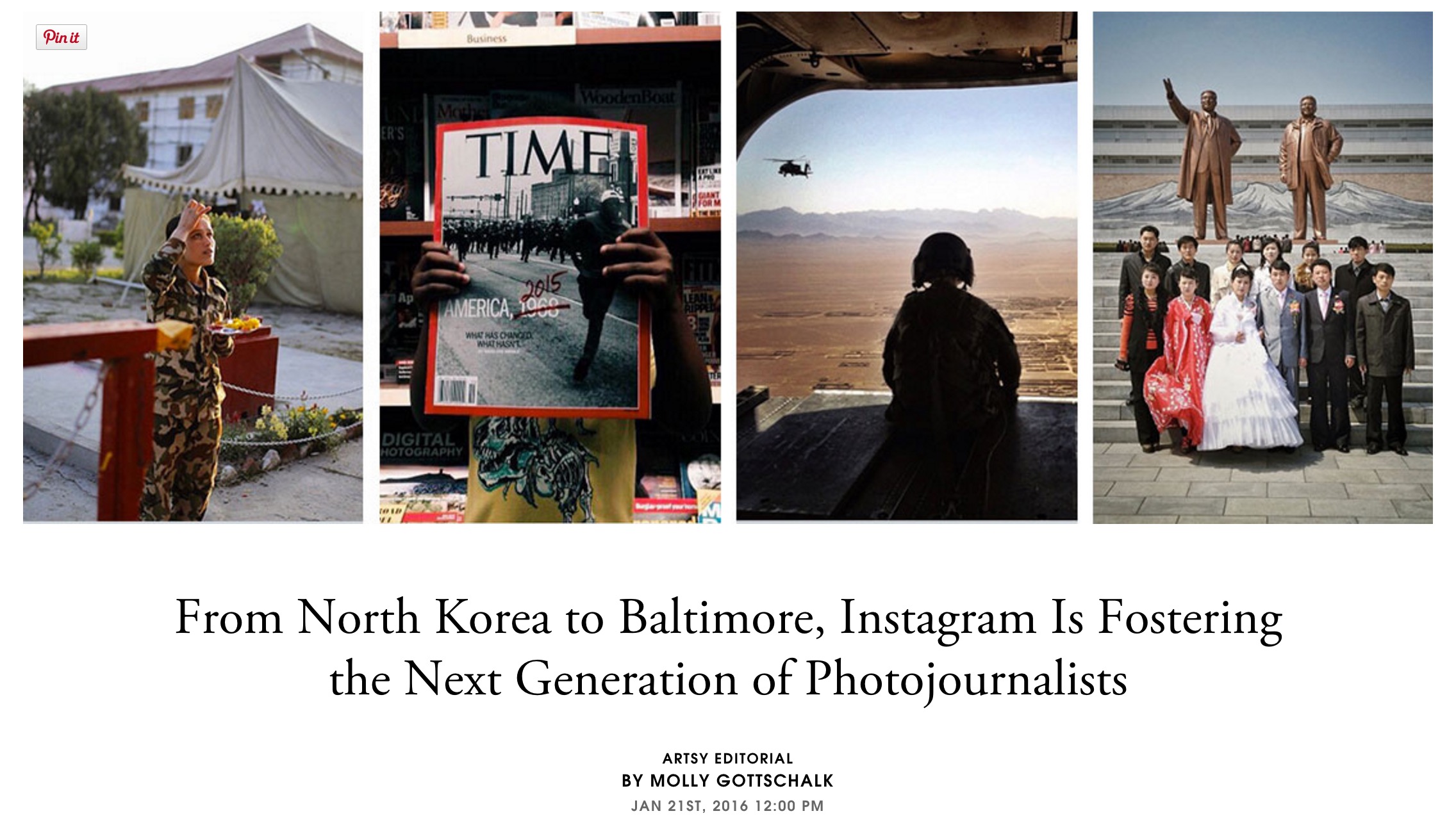Instagram's Photojournalism
Zed“I look at my Instagram feed and it’s a network; I’m seeing through the eyes of people around the world,” says the image-sharing app’s Teru Kuwayama. Following two decades as a noted photojournalist, covering war and humanitarian crises in Iraq, Afghanistan, Pakistan, and Kashmir, the TED Senior Fellow now works on the community team at Instagram, specifically with photojournalists and the wider photo community. “So many eyes and so many minds are coming online and being harnessed to this grid,” he says. For Kuwayama, this collective network and its unprecedented audience serves as the greatest draw for his involvement. “It’s unlocked a totally different spectrum of reporting,” he says.
There is always the confusion of the technical issue with the issue of material i.e. opposing DSLRs with Distribution Issues, whereas the more appropriate approach would be to deal with the question of equipment legitimacy (DSLR-or-not) separately from the question of new media and its distributive platforms (Instagram) v.s. traditional media (print publications that depend on news photography for their images).
The issue is not that photojournalists are ditching their DSLRs (though camera manufacturers should definitely be worried); instead, it is that the news photograph is neither any longer the sole domain of the highly trained and the sufficiently equipped, nor the exclusive domain of the agencies who would actually pay for these photographs. In such a flat world, what then is the value of the photograph and its photographer?
